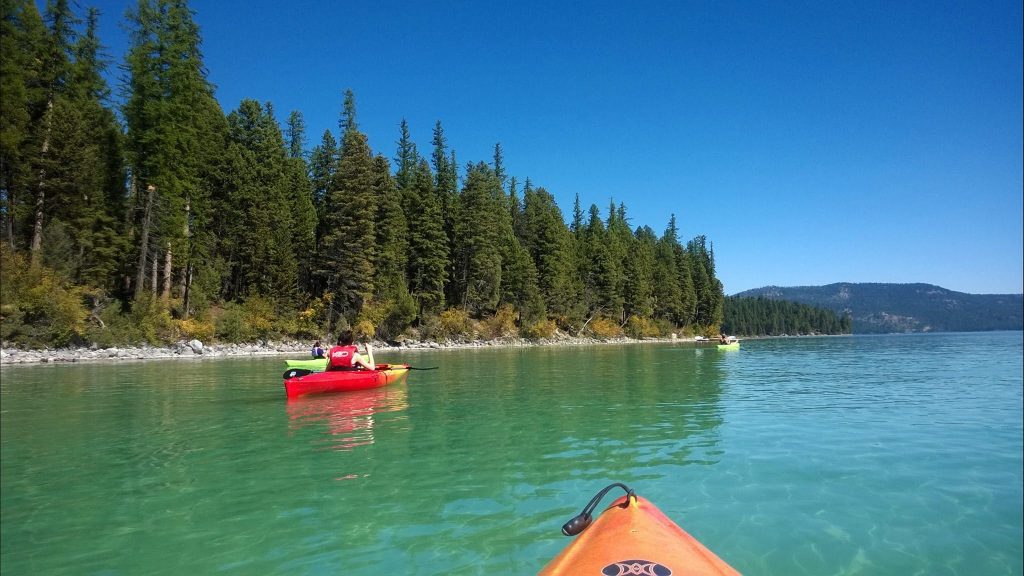
Wildlife Viewing & Photography in Northwest Montana
Northwest Montana is a wildlife lover’s dream. Home to iconic species like grizzly bears, moose, bald eagles, and mountain goats, the region offers countless opportunities to see and photograph animals in their natural habitats. Whether you’re an avid wildlife photographer or just hoping for a glimpse of Montana’s majestic creatures, this guide will help you plan the perfect outing.
Best Places for Wildlife Viewing
- Glacier National Park
- Wildlife You May See: Mountain goats, bighorn sheep, black bears, grizzly bears, elk, and marmots.
- Best Locations:
- Logan Pass: Spot mountain goats and bighorn sheep along the cliffs and alpine meadows.
- Many Glacier: Known as a wildlife hotspot, you may see bears, moose, and even wolves.
- Two Medicine: Quiet and less crowded, a great place to observe elk and waterfowl.
- Pro Tip: Visit early morning or around dusk for the best chance to spot animals.
- National Bison Range (Charlo, MT)
- Wildlife You May See: Bison, elk, pronghorn antelope, deer, and black bears.
- What Makes It Unique: A self-guided driving loop allows you to observe herds of bison roaming freely across the open grasslands.
- Best Time to Visit: Late spring and early summer when calves are born.
- Flathead Lake
- Wildlife You May See: Bald eagles, osprey, and a variety of waterfowl.
- Best Locations:
- Wild Horse Island: Accessible by boat, this island is home to wild horses, bighorn sheep, and mule deer.
- South Shore: Watch for eagles fishing near the water.
- Kootenai National Forest
- Wildlife You May See: Moose, black bears, mountain lions, and even lynx.
- Pro Tip: Focus on riparian areas and lowland forests, especially in the early morning.
- Smith Lake Waterfowl Production Area (near Kalispell)
- Wildlife You May See: Ducks, geese, sandhill cranes, and swans.
- What Makes It Unique: This wetland is a birder’s paradise, especially during migration seasons in spring and fall.
Best Times for Wildlife Viewing
- Spring (April – June): Animals are active, and many species, like deer, elk, and bison, have their young during this time.
- Summer (July – August): Great for spotting animals in higher elevations. Morning and evening hours are best as animals avoid midday heat.
- Fall (September – November): Elk bugling season makes for dramatic photography, and bears are actively foraging before hibernation.
- Winter (December – February): Look for tracks in the snow, and spot moose or deer in lower elevations where food is more abundant.
Tips for Ethical Wildlife Viewing
- Keep Your Distance: Use binoculars or a telephoto lens to avoid disturbing animals.
- Respect Habitat: Stay on designated trails and avoid trampling vegetation.
- Be Quiet: Loud noises can scare animals away or cause them stress.
- Don’t Feed Wildlife: Feeding animals disrupts their natural behaviors and can lead to dangerous situations.
- Pack Out What You Pack In: Leave no trace to keep Montana wild and pristine.
Why Northwest Montana for Wildlife Photography?
Northwest Montana offers unparalleled opportunities for wildlife viewing and photography, with its combination of diverse habitats, abundant wildlife, and stunning landscapes. Whether you’re scanning the cliffs of Glacier for a mountain goat or watching bison roam the plains at the National Bison Range, each outing is an adventure.
So pack your gear, head into the wild, and prepare for moments that will leave you in awe—both behind the lens and in your heart.
Discover more from Gear Up!
Subscribe to get the latest posts sent to your email.


